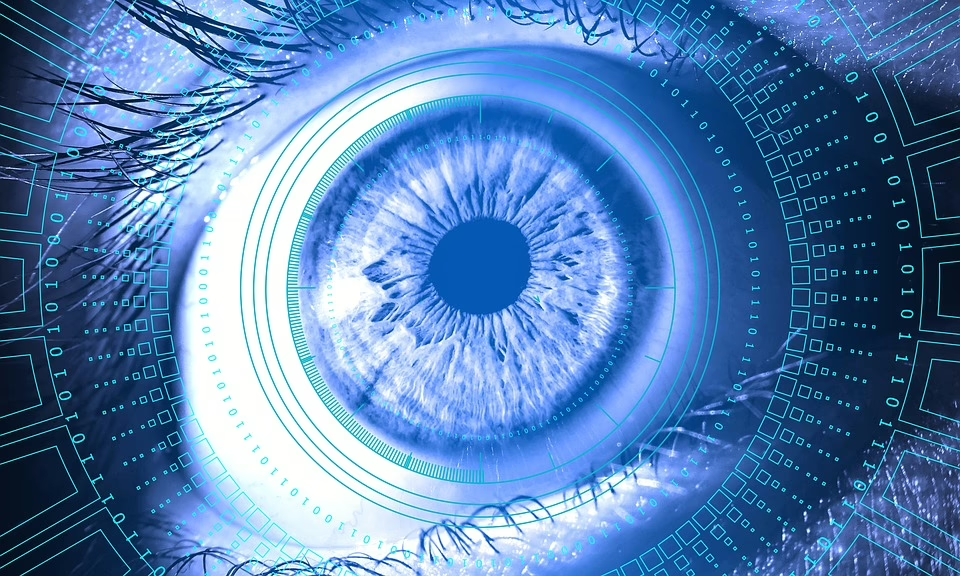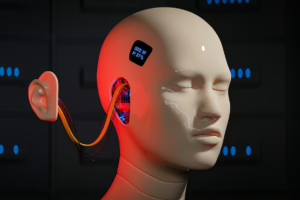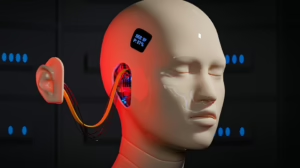Artificial Intelligence Explained: Definitions, Types, and Applications
Introduction
Artificial Intelligence (AI) has emerged as one of the most transformative technologies of the 21st century. It not only reshapes industries but also influences daily life, creating both opportunities and challenges for society at large. This article aims to demystify AI by discussing its definitions, various types, and applications across different sectors.
Understanding Artificial Intelligence
1. Definitions of AI
At its core, Artificial Intelligence refers to the capability of a machine to mimic human cognitive functions. While AI can be defined in multiple ways, here are some widely accepted definitions:
-
General Definition: AI is the simulation of human intelligence processes by machines, particularly computer systems. These processes include learning (acquiring information and the rules for using it), reasoning (using rules to reach approximate or definite conclusions), and self-correction.
-
Narrow AI: Also known as Weak AI, this refers to AI systems designed to perform a narrow task (e.g., facial recognition or internet searches). Most current applications of AI fall under this category.
-
General AI: Also known as Strong AI, this concept refers to machines that possess the ability to understand, learn, and apply intelligence in a manner indistinguishable from humans. Although still largely theoretical, General AI represents the ultimate goal of artificial intelligence research.
-
Superintelligence: This term describes a scenario in which AI surpasses human intelligence across all fields, including creativity, problem-solving, and social intelligence. The implications of such an advancement are the subject of extensive debate among experts.
2. Historical Context
The concept of AI is not new; it dates back several decades. The term “Artificial Intelligence” was coined at the 1956 Dartmouth Conference, where researchers gathered to discuss the potential for machines to simulate human thinking. Early AI accomplishments included simple problem-solving programs and basic neural networks. However, progress experienced numerous setbacks, commonly referred to as “AI winters”—periods of reduced funding and interest.
The resurgence in AI applications began in the 21st century, driven by advancements in machine learning, deep learning, and the availability of large datasets and computational power. Consequently, AI’s capabilities have skyrocketed, leading to practical implementations across various sectors.
Types of Artificial Intelligence
AI can be categorized in various ways; one common method is based on its capabilities. Here are the primary types of AI:
1. Reactive Machines
Reactive machines are the most basic type of AI, designed to perform specific tasks without the ability to form memories or use past experiences. These systems react to specific inputs with pre-defined responses.
Example: IBM’s Deep Blue, which defeated world chess champion Garry Kasparov in 1997, is a classic example of a reactive machine. The system could evaluate millions of chess moves but lacked any memory or learning capability.
2. Limited Memory
Limited-memory AI systems can use past experiences to inform immediate decisions. These systems are often used in applications like self-driving cars, where data about the road and other cars is analyzed to make driving decisions.
Example: Autonomous vehicles utilize limited memory AI to make decisions based on previous traffic patterns and current environmental conditions.
3. Theory of Mind
This type of AI aims to understand human emotions, beliefs, and intentions. While still largely theoretical, advancements in this area are crucial for creating machines that can interact with humans more naturally and intuitively.
4. Self-aware AI
The highest level of AI, self-aware AI, is still in the realm of science fiction. A self-aware AI would possess consciousness, self-awareness, and the ability to understand human emotions and social constructs.
Applications of Artificial Intelligence
AI’s versatility has allowed it to permeate various sectors, transforming how businesses operate and enhancing user experiences. Here are notable applications across different fields:
1. Healthcare
AI plays an increasingly pivotal role in enhancing healthcare delivery. From diagnostics to patient care, AI tools have the potential to improve outcomes while reducing costs.
-
Diagnostics: AI algorithms can analyze medical images, such as X-rays, MRIs, and CT scans, to detect anomalies more quickly and accurately than human diagnosticians. For instance, Google’s DeepMind has developed AI systems that can detect eye diseases with high accuracy.
-
Personalized Medicine: Machine learning algorithms analyze genetic information to tailor treatments to individual patients, optimizing efficacy while minimizing side effects.
-
Telemedicine: AI chatbots can triage patients and facilitate remote consultations, enabling healthcare providers to reach a broader audience.
2. Finance
In the financial sector, AI is revolutionizing how institutions operate, enhancing both customer experiences and internal efficiency.
-
Fraud Detection: Machine learning algorithms sift through transactions to identify unusual patterns indicative of fraudulent activities, allowing for real-time interventions.
-
Algorithmic Trading: AI systems analyze market data and execute trades at lightning speed, optimizing profits based on predictive algorithms.
-
Customer Service: AI-driven chatbots and virtual assistants are employed by banks and financial institutions to provide 24/7 support and handle customer inquiries.
3. Retail
The retail sector leverages AI to enhance customer experiences and optimize supply chains.
-
Personalized Recommendations: E-commerce platforms like Amazon and Netflix utilize AI algorithms to analyze browsing histories and preferences, offering tailored product recommendations that increase sales.
-
Inventory Management: AI systems employ predictive analytics to optimize stock levels, helping retailers make informed decisions about inventory based on customer demand forecasts.
-
Chatbots: Many retailers employ AI chatbots for customer service, helping to answer queries and guiding customers through the purchasing process.
4. Autonomous Vehicles
The self-driving car industry is perhaps one of the most eagerly anticipated applications of AI. Companies like Tesla, Waymo, and Uber are investing heavily in developing autonomous vehicles that utilize a combination of sensors and AI algorithms to navigate complex environments.
- Safety and Efficiency: AI-driven vehicles can analyze vast amounts of data from various sensors to make driving decisions, aim to reduce traffic accidents, and optimize routes for efficiency.
5. Manufacturing
AI is streamlining manufacturing processes through automation and predictive maintenance.
-
Quality Control: AI systems can monitor production lines in real time, identifying defects and suggesting adjustments to ensure consistent product quality.
-
Predictive Maintenance: By analyzing usage patterns and performance data, AI can predict when machinery will require maintenance, thereby minimizing downtime and reducing costs.
6. Human Resources
AI is transforming human resources through data analytics and automation.
-
Recruitment: AI can analyze resumes and applications, screening candidates based on predefined criteria, which speeds up the initial stages of hiring.
-
Employee Engagement: AI tools can analyze employee feedback and engagement levels, providing insights into workplace culture and areas that may need improvement.
7. Education
AI has begun to permeate the educational sector, offering personalized learning experiences and administrative support.
-
Personalized Learning: Adaptive learning platforms utilize AI to analyze student performance and tailor educational content to meet individual learning needs.
-
Administrative Support: AI can automate administrative tasks, such as grading and scheduling, allowing educators to focus more on teaching.
8. Entertainment
AI is reshaping the entertainment industry by customizing content.
-
Content Creation: AI algorithms can generate music, art, and even scripts, demonstrating creativity that parallels human creators.
-
Recommendation Systems: Streaming services like Spotify and Netflix utilize AI to recommend content based on user preferences, enhancing user satisfaction and engagement.
The Ethical Challenges of AI
While AI offers numerous benefits, it also presents ethical challenges that society must grapple with. Here are several key concerns:
1. Job Displacement
One of the most immediate concerns surrounding AI is the potential for job displacement. Automation and machine learning may render certain jobs obsolete, necessitating workforce reskilling and retraining initiatives.
2. Bias and Discrimination
AI systems are trained on existing datasets, which may contain biases. Consequently, these systems can inadvertently perpetuate or even exacerbate existing inequalities. Addressing algorithmic bias is critical for ensuring fair outcomes.
3. Privacy Concerns
As AI systems require vast amounts of data, privacy concerns arise regarding how data is collected, stored, and used. Regulatory frameworks like GDPR aim to address these concerns, but compliance remains a challenge.
4. Accountability
As AI systems gain autonomy, questions arise about accountability. If an AI system makes a mistake—such as causing a car accident—who is responsible? This issue complicates liability in many industries.
The Future of AI
Looking ahead, the trajectory of AI development promises advancements on multiple fronts:
-
Continued Integration: AI will seamlessly integrate into more aspects of daily life, from smart homes to personalized interfaces in social media.
-
Enhanced Collaboration: Human-AI collaboration will become more common, augmenting human capabilities rather than replacing them entirely.
-
Regulatory Frameworks: As AI technologies evolve, regulatory frameworks will need to adapt, balancing innovation with ethical considerations and societal impact.
-
Long-term Safety: As AI systems advance, the question of long-term safety and control becomes increasingly pressing. Experts advocate for protocols to ensure alignment with human values.
Conclusion
Artificial Intelligence has the potential to revolutionize how we live, work, and interact with our environment. By understanding its definitions, types, and applications, individuals and organizations can better navigate the challenges and opportunities that lie ahead. As we advance further into the age of AI, fostering responsible development and ethical considerations will be paramount to reaping its full benefits for society.
Modern Footnote Source
- [Russell, S., & Norvig, P. (2020). Artificial Intelligence: A Modern Approach. Pearson.]
This book serves as one of the fundamental texts in AI, offering comprehensive insights into various AI technologies and their applications across sectors.
- [Marr, B. (2019). Artificial Intelligence in Practice. Wiley.]
This work details how businesses can effectively implement AI strategies and provides case studies of successful applications.
- [Chui, M., Manyika, J., & Miremadi, M. (2016). Where machines could replace humans—and where they can’t (yet). McKinsey Quarterly.]
This article explores the potential for AI to displace jobs across various sectors and the necessary steps to address workforce transitions.
- [Brynjolfsson, E., & McAfee, A. (2014). The Second Machine Age. W.W. Norton & Company.]
This book discusses the broader implications of technological advancements, including AI, in transforming economic and social structures.
- [European Commission. (2019). Ethics Guidelines for Trustworthy AI.]
This document seeks to establish ethical guidelines that serve as a framework for developing and deploying trustworthy AI systems.
By unpacking the nuances of AI, we advocate for a proactive approach to harnessing its possibilities while mitigating associated risks, ensuring that this powerful technology serves humanity’s best interests.


























Add Comment